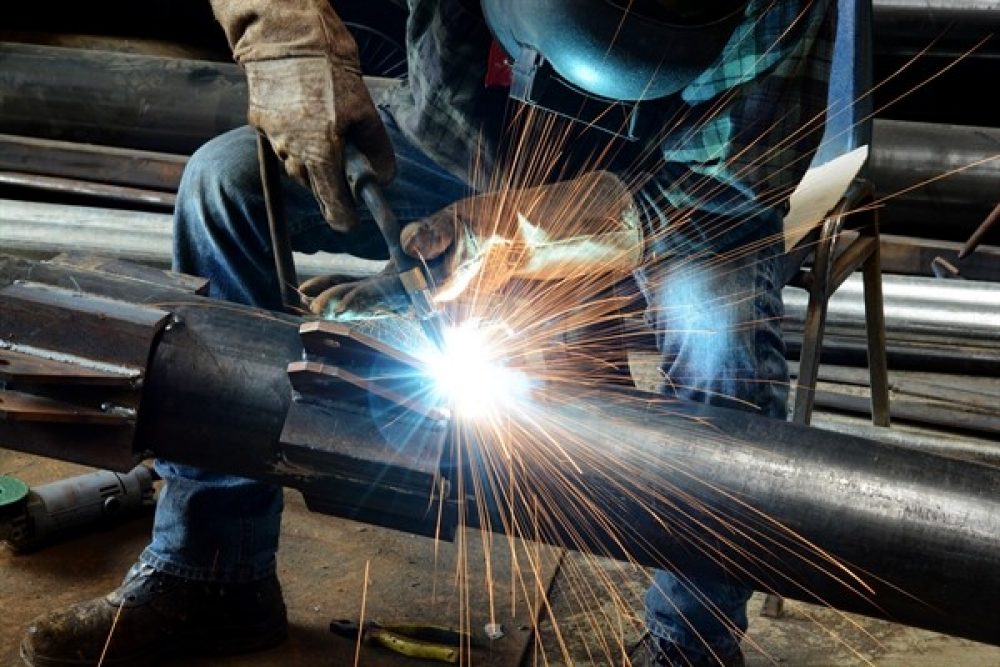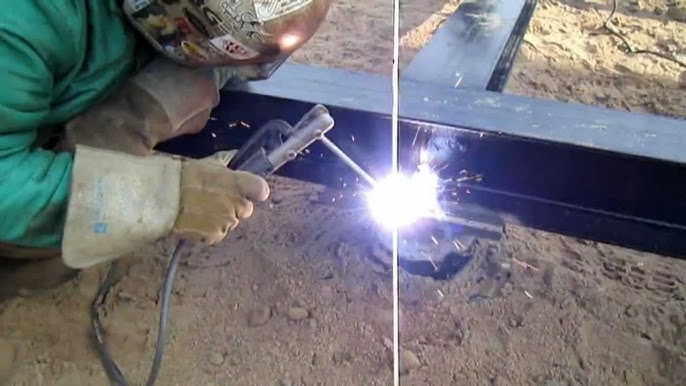Quick solutions to weld misalignment in Montana Mobile Welding and Repair Fabrication
Wiki Article
Common Welding Repair Issues and Just How to Address Them Effectively
Welding repairs commonly encounter a variety of concerns that can endanger the stability of the end product. Usual problems include inadequate infiltration, porosity, and misalignment, to name a few. Each flaw provides special difficulties that call for particular techniques for resolution. Understanding these issues is crucial for welders aiming to improve their abilities and results. This discussion will discover these typical welding fixing issues and efficient techniques to address them.Insufficient Penetration
Poor infiltration takes place when the weld metal stops working to totally fuse with the base material, leading to weak joints and potential structural failures. This concern frequently stems from inadequate heat input, wrong electrode angle, or improper welding speed. Welders might come across poor penetration because of a mistake of the essential specifications for a specific material thickness or kind. In addition, contamination on the base product's surface can impede effective bonding, exacerbating the trouble. To resolve insufficient penetration, welders ought to guarantee appropriate setups on their devices and maintain a clean work surface. Regular inspection of welds is advised to identify any deficiencies early, enabling timely corrections and the avoidance of compromised structural stability in welded settings up.Porosity
Porosity is a common problem in bonded joints that shows up as small gas bubbles entraped within the weld metal. This issue can endanger the integrity of the weld, causing reduced stamina and possible failing under tension. Montana Mobile Welding and Repair Fabrication. Porosity usually develops from contamination, moisture, or improper welding strategies, which allow gases to get away into the liquified weld swimming pool. To attend to porosity, welders ought to ensure appropriate surface preparation, maintain a tidy workplace, and use ideal welding criteria. Furthermore, choosing the appropriate filler product and protecting gas can alleviate gas entrapment. Normal examination and testing of welds can aid recognize porosity early, assuring timely corrective activities are taken, therefore preserving the top quality and dependability of the welded frameworkImbalance
Misalignment in welding can develop from different variables, consisting of improper arrangement and thermal development. Understanding the origin is crucial for efficient resolution. Several improvement techniques are readily available to realign parts and assure structural stability.Causes of Imbalance
Welding misalignment commonly stems from a variety of underlying concerns that can endanger structural integrity. One primary reason is improper fit-up of elements prior to welding, which can result in gaps and irregular surfaces. Variations in thermal development during the welding procedure can likewise cause distortion, particularly if the materials being joined have different coefficients of expansion. In addition, inadequate securing and fixturing may fail to hold parts safely in location, bring about motion during welding. Inadequately kept equipment, consisting of welding makers and devices, may introduce inconsistencies in the weld grain, additional adding to misalignment. Lastly, driver mistake, originating from inadequate training or experience, can also play a substantial role in producing misaligned welds.Adjustment Techniques Available
Resolving imbalance successfully needs a combination of corrective techniques tailored to the certain concerns at hand. One usual method is the usage of fixtures or jigs to hold elements in the proper placement during welding, making sure regular alignment. Furthermore, preheating the materials can aid decrease distortion and improve fit-up. For considerable imbalance, mechanical adjustment methods, such as making use of hydraulic jacks or clamps, can be employed to fix the setting prior to welding. Post-weld warm therapy may additionally be necessary to soothe anxieties triggered by imbalance. Mindful examination and adjustment throughout the arrangement phase can avoid misalignment problems from ending up being substantial troubles, advertising a smoother welding process and improving total architectural stability.Distortion
Distortion is an usual obstacle in welding that can occur from numerous aspects, consisting of uneven home heating and air conditioning. Comprehending the sources of distortion is important for applying effective prevention methods. Resolving this issue not only boosts structural stability however likewise enhances the total high quality of the weld.Root causes of Distortion
When subjected to the extreme heat of welding, products frequently undergo adjustments that can cause distortion. This sensation mainly arises from thermal expansion and contraction during the welding procedure. As the weld location heats up, the material increases; upon cooling, it contracts, which can produce internal tensions. In addition, irregular heating across a work surface can aggravate these stresses, resulting in bending or bending. The kind of material additionally plays a substantial role; steels with differing thermal conductivity and coefficients of growth may respond differently, leading to uncertain distortions. Inadequate joint layout and inadequate fixturing can contribute to imbalance during welding, enhancing the probability of distortion. Comprehending these causes is important for reliable welding fixing and prevention strategies.Prevention Techniques
Effective avoidance methods for distortion throughout welding emphasis on regulating heat input and making certain proper joint design. Keeping a consistent warm input helps to decrease thermal growth and tightening, which can lead to distortion. Making use of techniques such as preheating the work surface can likewise minimize the temperature gradient, promoting consistent home heating. Additionally, selecting suitable joint designs, such as T-joints or lap joints, can enhance security and lower tension concentrations. Executing proper fixturing to protect the workpieces in position further help in preserving placement throughout the welding process. Ultimately, staggered welding sequences can distribute heat extra uniformly, preventing local distortion. By using these approaches, welders can greatly lower the probability of distortion and enhance the overall quality of their welds.Fracturing
Cracking is a typical issue experienced in welding repairs, usually arising from different aspects such as improper air conditioning rates, product choice, or poor joint prep work. The event of fractures can significantly compromise the honesty of the weld, bring about possible failings during procedure. To address this concern, welders should initially analyze the origin creates, making certain that products are compatible and suitably chosen for the details application. Additionally, controlling the cooling price during the welding procedure is vital; fast air conditioning can cause stress and cause breaking. Correct joint design and prep work likewise add to lessening the risk. Implementing check here these approaches can boost weld high quality and resilience, ultimately decreasing the likelihood of cracking in finished weldments.
Incomplete Combination
A considerable problem in welding repair services is insufficient combination, which occurs when the weld steel does not properly bond with the base product or previous weld passes - Montana Mobile Welding and Repair Belgrade Fabrication. This defect can cause weak points in the joint, potentially endangering the honesty of the welded framework. Factors contributing to insufficient combination include not enough warm input, improper welding strategy, and contamination of the surfaces being joined. To address this problem properly, welders ought to ensure correct pre-weld cleansing and surface area preparation, in addition to readjust their welding specifications to attain adequate infiltration and blend. Regular inspection during the welding process can likewise help determine insufficient combination early, permitting timely restorative measures to enhance the general top quality of the weldOverheating
While welding fixings can boost structural honesty, overheating offers a significant obstacle that can lead to product deterioration. Excessive warm during welding can change the mechanical residential properties of metals, causing minimized stamina, enhanced brittleness, and bending. This sensation is especially essential in high-stress applications where structural dependability is critical. Determining getting too hot can entail aesthetic inspections for discoloration or distortion, along with keeping an eye on temperature during the welding procedure. To alleviate the risks linked with overheating, welders should employ ideal strategies, such as managing heat input, changing travel speed, and using suitable filler materials. In addition, implementing pre- and post-weld warm treatments can assist bring back product buildings and enhance the total quality of the repair service, guaranteeing long-lasting efficiency and security.Frequently Asked Concerns
What Are the Common Indications of a Welding Issue?

How Can I Check My Welds for High quality?
To evaluate welds for quality, one can use aesthetic examinations, ultrasonic testing, and radiographic methods. Each method ensures architectural integrity, determines defects, and verifies adherence to specified standards, eventually enhancing the integrity of the welded joints.What Safety and security Safety Measures Should I Take While Welding?
When welding, one must focus on safety and security by wearing ideal personal safety tools, guaranteeing appropriate ventilation, protecting combustible materials away, preserving a clean workspace, and understanding environments to stop mishaps and injuries.Can I Fix a Weld Without Redoing the Entire Joint?
Fixing a weld without redesigning the entire joint is possible, depending on the damage (Montana Mobile Welding and Repair Belgrade). Methods such as grinding, adding filler material, or using a welding procedure can properly deal with details imperfections while preserving the surrounding structureWhat Tools Are Essential for Efficient Welding Services?
Essential devices for effective welding repair work include a welding maker, wire brush, grinder, safety gear, clamps, and filler products. Each device plays a crucial function in ensuring high quality and security during the repair work process. Porosity typically develops from contamination, moisture, or inappropriate welding strategies, which enable gases to escape right into the molten weld swimming pool. Badly kept equipment, including welding machines and devices, may introduce variances in the weld bead, further adding to misalignment. When subjected to the extreme warmth of welding, materials frequently undertake modifications that can lead to distortion. Splitting is an usual concern come across in welding fixings, typically resulting from different elements such as improper air conditioning rates, product selection, or poor joint prep work. A considerable issue in welding repairs is incomplete blend, which happens when the weld steel does not properly bond with the base product or previous weld passes.Report this wiki page